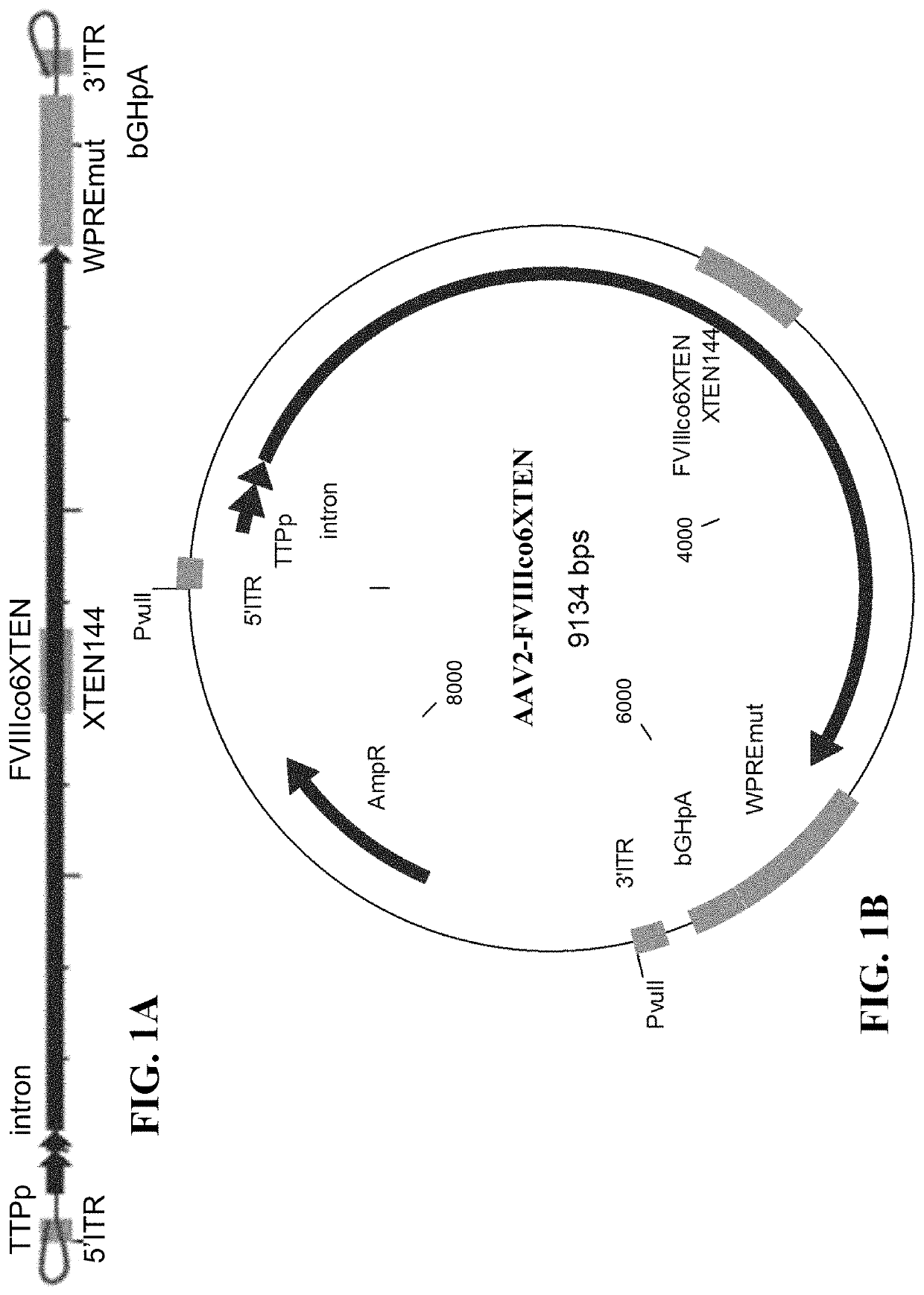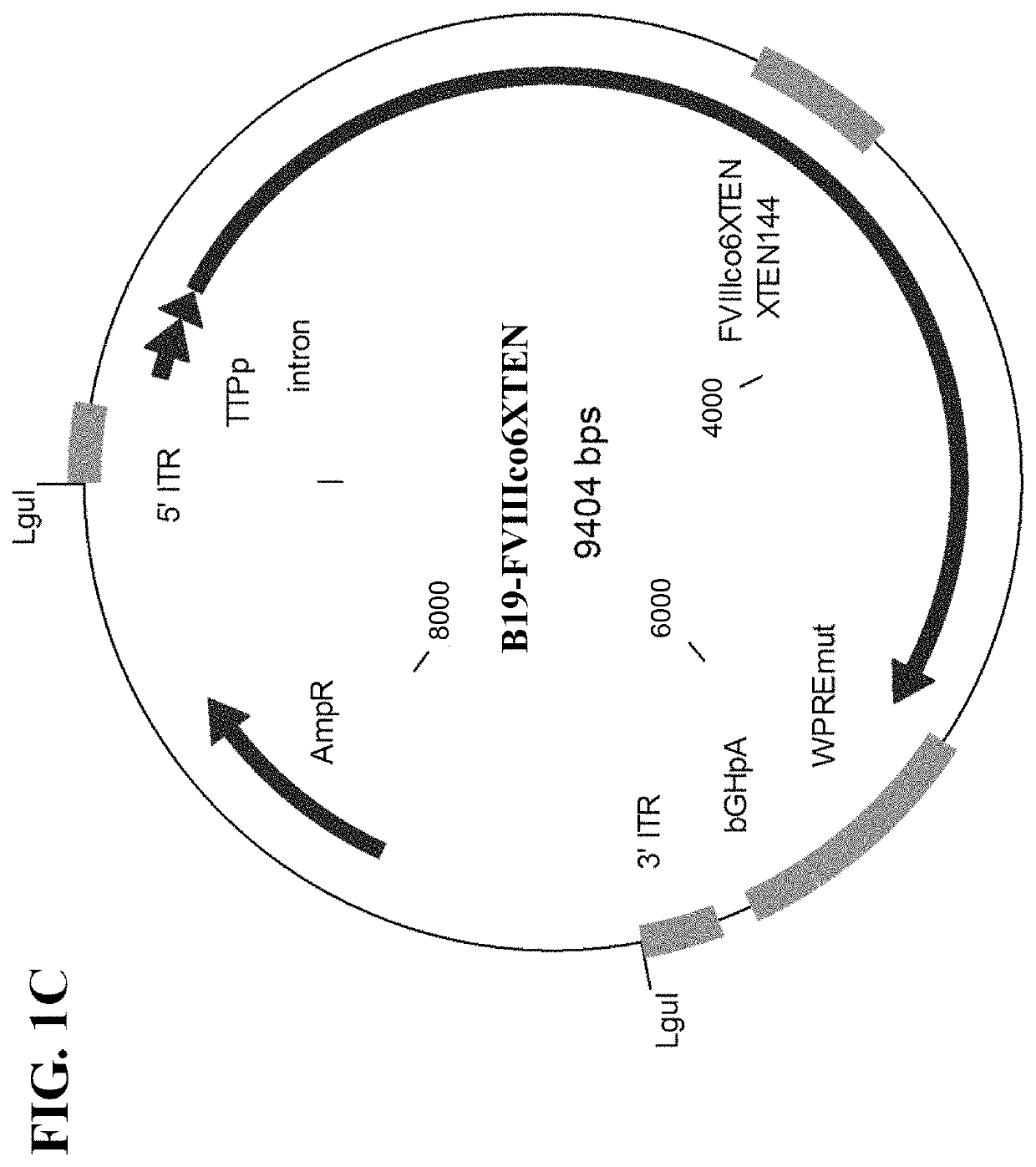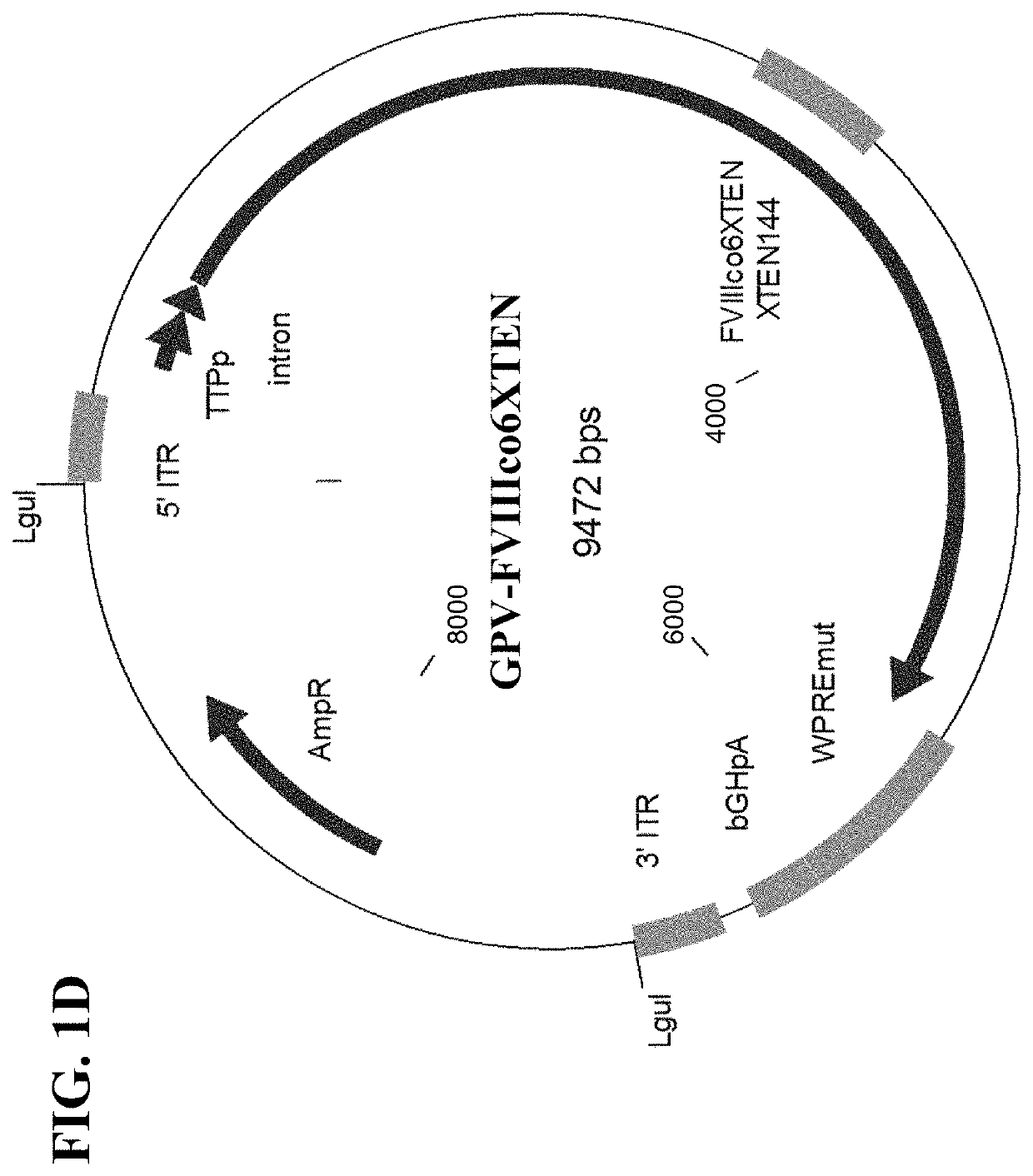Nucleic acid molecules and uses thereof
a technology aav, applied in the field of nucleic acid molecules, can solve the problems of limited current use of aav, limited viral packaging capacity of about 4.5 kb of heterologous dna, and unqualified patients with pre-existing anti-aav immunity to avv based gene therapy treatmen
- Summary
- Abstract
- Description
- Claims
- Application Information
AI Technical Summary
Benefits of technology
Problems solved by technology
Method used
Image
Examples
example 1
n of FVIII Expression Constructs Bearing AAV and Non-AAV Parvoviral ITRs
example 1a
Codon-Optimized FVIII Gene and Inverted Terminal Repeat (ITR) Regions from AAV into Genetic Cassettes
[0448]FVIII genetic cassette was generated based on the genome of AAV serotype 2. However, ITR regions originated from any serotype (including synthetic) can be used in this approach (FIG. 1A).
[0449]Expression plasmid AAV2-FVIIIco6XTEN encoding a codon-optimized FVIII coding sequence under the regulation of a liver-specific promoter (TTPp, FIGS. 1A and 1B) flanked by inverted terminal repeat (ITR) regions from AAV (AAV-FVIII) was designed for in vitro and in vivo expression, as shown in FIG. 1B. The genetic cassette also contains WPRE and bGHpA elements for optimal expression of the transgene (FIGS. 1A and 1B). ITR-flanked codon-optimized FVIII sequence was cloned into a plasmid backbone comprising a ColE1 origin of replication and an expression cassette for beta-lactamase, which confers ampicillin resistance (FIG. 1B). Recognition sites for the restriction endonuclease PvuII flankin...
example 1b
Codon-Optimized FVIII Gene and Inverted Terminal Repeat (ITR) Regions from Non-AAV Parvoviruses into Genetic Cassettes
[0450]Based on the phylogenic relationship between the members of the viral family Parvoviridae, which AAV belongs to (FIG. 2A), it was hypothesized that other non-AAV members of the genus Dependovirus and the members of the genus Erythrovirus (and possibly all / many other members of the viral family) utilize similar cellular mechanisms for the maintenance of the viral life cycle and most importantly, establishment of persistent, latent infection. Therefore, the ITR regions originated from the genomes of these viruses could be utilized to develop AAV-like (but not AAV-based) genetic expression cassettes. The following parvoviruses were tested for the suitability of their ITR regions for the development of genetic constructs for gene therapy applications: dependovirus Goose parvovirus (GPV) strain B and erythrovirus B19 parvovirus (FIG. 2A).
[0451]Instability of parvovi...
PUM
| Property | Measurement | Unit |
|---|---|---|
| time | aaaaa | aaaaa |
| nucleic acid | aaaaa | aaaaa |
| molecular weight | aaaaa | aaaaa |
Abstract
Description
Claims
Application Information
 Login to View More
Login to View More - R&D
- Intellectual Property
- Life Sciences
- Materials
- Tech Scout
- Unparalleled Data Quality
- Higher Quality Content
- 60% Fewer Hallucinations
Browse by: Latest US Patents, China's latest patents, Technical Efficacy Thesaurus, Application Domain, Technology Topic, Popular Technical Reports.
© 2025 PatSnap. All rights reserved.Legal|Privacy policy|Modern Slavery Act Transparency Statement|Sitemap|About US| Contact US: help@patsnap.com



